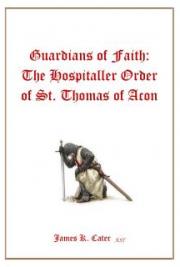CHAPTER 13. THE USE OF SPIES
1. Sun Tzu said: Raising a host of a hundred thousand men and marching them great distances entails heavy loss on the people and a drain on the resources of the State. The daily expenditure will amount to a thousand ounces of silver. There will be commotion at home and abroad, and men will drop down exhausted on the highways. As many as seven hundred thousand families will be impeded in their labor.
2. Hostile armies may face each other for years, striving for the victory which is decided in a single day. This being so, to remain in ignorance of the enemy's condition simply because one grudges the outlay of a hundred ounces of silver in honors and emoluments, is the height of inhumanity.
3. One who acts thus is no leader of men, no present help to his sovereign, no master of victory.
4. Thus, what enables the wise sovereign and the good general to strike and conquer, and achieve things beyond the reach of ordinary men, is FOREKNOWLEDGE.
5. Now this foreknowledge cannot be elicited from spirits; it cannot be obtained inductively from experience, nor by any deductive calculation.
6. Knowledge of the enemy's dispositions can only be obtained from other men.
7. Hence the use of spies, of whom there are five classes: (1) Local spies; (2) inward spies; (3) converted spies; (4) doomed spies; (5) surviving spies.
8. When these five kinds of spy are all at work, none can discover the secret system. This is called "divine manipulation of the threads." It is the sovereign's most precious faculty.
9. Having LOCAL SPIES means employing the services of the inhabitants of a district.
10. Having INWARD SPIES, making use of officials of the enemy.
11. Having CONVERTED SPIES, getting hold of the enemy's spies and using them for our own purposes.
12. Having DOOMED SPIES, doing certain things openly for purposes of deception, and allowing our spies to know of them and report them to the enemy.
13. SURVIVING SPIES, finally, are those who bring back news from the enemy's camp.
14. Hence it is that which none in the whole army are more intimate relations to be maintained than with spies. None should be more liberally rewarded. In no other business should greater secrecy be preserved.
15. Spies cannot be usefully employed without a certain intuitive sagacity.
16. They cannot be properly managed without benevolence and straightforwardness.
17. Without subtle ingenuity of mind, one cannot make certain of the truth of their reports.
18. Be subtle! be subtle! and use your spies for every kind of business.
19. If a secret piece of news is divulged by a spy before the time is ripe, he must be put to death together with the man to whom the secret was told.
20. Whether the object be to crush an army, to storm a city, or to assassinate an individual, it is always necessary to begin by finding out the names of the attendants, the aides-de-camp, and door-keepers and sentries of the general in command. Our spies must be commissioned to ascertain these.
21. The enemy's spies who have come to spy on us must be sought out, tempted with bribes, led away and comfortably housed. Thus they will become converted spies and available for our service.
22. It is through the information brought by the converted spy that we are able to acquire and employ local and inward spies.
23. It is owing to his information, again, that we can cause the doomed spy to carry false tidings to the enemy.
24. Lastly, it is by his information that the surviving spy can be used on appointed occasions.
25. The end and aim of spying in all its five varieties is knowledge of the enemy; and this knowledge can only be derived, in the first instance, from the converted spy. Hence it is essential that the converted spy be treated with the utmost liberality.
26. Of old, the rise of the Yin dynasty was due to I Chih who had served under the Hsia. Likewise, the rise of the Chou dynasty was due to Lu Ya who had served under the Yin.
27. Hence it is only the enlightened ruler and the wise general who will use the highest intelligence of the army for purposes of spying and thereby they achieve great results. Spies are a most important element in water, because on them depends an army's ability to move.
Sun Tzu
Also Listed In: Philosophers
Famous As: Ancient Military General, Strategist & Philosopher
Nationality: Chinese
Born On: 544 BC
Works & Achievements: Wrote the influential, The Art of War.
Top of Form
Bottom of Form
Sun Tzu was an ancient Chinese military general, strategist and philosopher, who is believed to have written the famous ancient Chinese book on military strategy, "The Art of War". Through his legends and the influential "The Art of War", Sun Tzu had a significant impact on Chinese and Asian history and culture. The book drew immense popularity during the 19th and 20th centuries when the Western Society saw its practical use. This work still has continued its impact on both Asian and Western culture and politics. Sun Tzu's authenticity is still a question of debate, but the traditional Chinese accounts place him in the Spring and Autumn Period of China (722-481 BC), where he was a military general serving under King Helü of Wu. Based on the description of warfare in "The Art of War" and the striking similarity of the text's prose to other works from Warring States period led the modern scholars to place the completion of "The Art of War" in the Warring States Period (476-221 BC).
Sun Tzu Childhood and Life
The exact birth of Sun Tzu is still uncertain, due to unreliability of the oldest available sources. The official chronicle of the State of Lu, The Spring and Autumn Annals states that Sun Tzu was born in Qi whereas The Records of the Grand Historian or Shiji states that Sun Tzu was a native of Wu. Both sources agrees on the fact that he was born in the late Spring and Autumn Period of China (722–481 BC), where he was a general and strategist, serving under the king of Wu, King Helü. His victories at the wars inspired Sun Tzu to write “The Art of War”. In the subsequent Warring States Period (475-221 BC), “The Art of War” became the most widely read military treatise. Warring States Period was period of constant war fought between seven nations (Zhao, Qi, Qin, Chu, Han, Wei and Yan) to gain control over the vast expanse of fertile territory in Eastern China. Sun Tzu proved his theories were effective on the battlefield as he had a successful military career. Sun Tzu’s descendant, Sun Bin, also became a famous scholar of the military arts.
The Art of War
The famous military treatise, “The Art of War” written by Sun Tzu depicts a philosophy of war for managing conflicts and winning battles. Some modern philosophers believe that apart from the writings of the author, it also contains commentary and clarifications from later military philosophers, such as Li Quan and Du Mu. This masterpiece, since its first publication, has been translated and distributed internationally, and was frequently referred and used by generals and theorists. There are numerous theories concerned with the completion of the text but it has been archeological proved that the Art of War was composed by at least the early Han dynasty. Since it is nearly impossible to predict the correct date of its completion, the differing theories regarding the work's author(s) and date of completion will never resolve. It was one of the six survived major works written before the unification of China in the 2nd century BC. In the late 1st millennium AD, during the Song Dynasty, these six major works were combined with a Tang Dynasty text into a collection also known as the Seven Military Classics. Being the central part of the collection, “The Art of War” formed the bases of orthodox military theory in China. The language used in the book can be distinguishable from a Western text on warfare and strategy. It was said that the text had recurrent mentions such as a leader must be “serene and inscrutable” and capable of comprehending “unfathomable plans”, which was confusing for Western readers who lack the awareness of the East Asian context. These statements will make clear sense if studied with Taoist thought and practice.
According to Sun Tzu, an ideal general was an enlightened Taoist master which led to “The Art of War” to become a prime example of Taoist strategy. It is different from the other Western works, such as Prussian general Carl von Clausewitz's On War on its spiritual dimension. To have well understanding of this text, it is essential to have awareness on Taoism. This book also gained popularity among the political leaders and those in business management. Today, it is also used in public administration and planning. Apart from describing the theories of battles, this text also discusses the diplomacy and developing relationships with other nation’s importance for the sovereignty of a state. It is now listed on the Marine Corps Professional Reading Program and is recommended to be read by all United States Military Intelligence personnel. CIA officers are also required to read this book. Scholars discovered a collection of ancient texts written on unusually well-preserved bamboo slips in early 1970s. These texts included “The Art of War” and Sun Bin's “Military Methods”. Sun Bin's “Military Methods” was written by a descendant of Sun and was lost since then. It is considered very important because of Sun Bin's relationship to Sun Tzu and also due to its addition to the body of military thought in late Chinese antiquity. This discovery led to the significant expansion of the body of surviving Warring States military theory. Sun Bin’s text, apart from being the only surviving military text from the Warring States period discovered in the twentieth century, also contains the closest similarity to “The Art of War” among all surviving texts.
Legacy
Sun Tzu’s “The Art of War” influenced many prominent figures from the history. One of the earliest accounts was of the first emperor of a unified China, Qin Shi Huang, who considered the book had ended the Age of Warring States. This text was introduced in Japan around AD 760 and quickly became popular among Japanese generals. This book played a significant role in the unification of Japan. Samurai were known to have honored the teachings of this book. The history states that the French emperor Napoleon studied Sun's military writings and used it effectively in the war against the rest of Europe. His ignorance to the central principles such as attentiveness to temporal conditions led to his defeat in Russia. There were accounts of Admiral of the Fleet Tôgô Heihachirô, who led Japan's forces to victory against Russia in the Russo-Japanese War, being an avid reader of “The Art of War”. Even the communist Chinese leader Mao Zedong partially credited his victory over Chiang Kai-shek and the Kuomintang in 1949 to this text. General Vo Nguyen Giap, who was the military mastermind behind victories over French and American forces in Vietnam, was believed to be an avid student and practitioner of Sun Tzu's ideas. It was the American defeat in Vietnam which brought attention of American military leaders to the writings of Sun Tzu. It is now listed on the Marine Corps Professional Reading Program. Its significance was proved again during the Persian Gulf War in the 1990s, where both General Norman Schwarzkopf, Jr. and General Colin Powell used Sun Tzu's principles of deception, speed, and attacking the enemy's weakness







